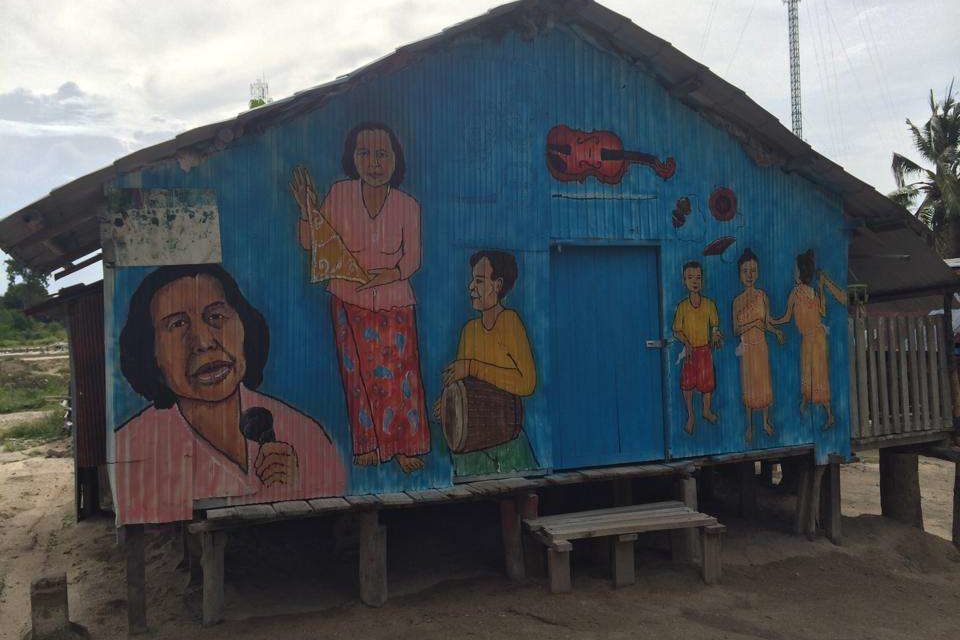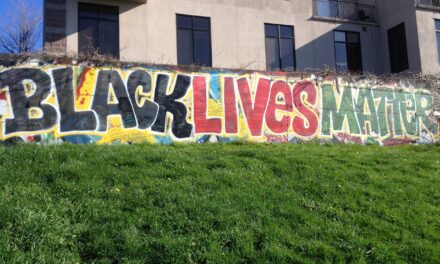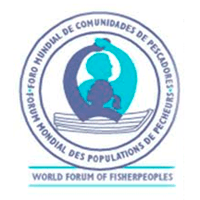By Niabdulghafar Tohming and Matt Davidson
Prior to the arrival of tourists in the peak season of tourism which starts around November – December, Sea gypsies, or what Thais and foreigners call “Chao Le”, from coastal areas of the southern region of Thailand, travel and gather for their annual assembly called “Ngan Ruam Yat Chao Le”—the Assembly of the Sea Gypsies.
Apart from being a space to exchange news and meet friends and relatives, the annual assembly has become a political space for sea gypsies to remind the public of their existence, to share and discuss problems, to make and follow up on commitments, and to conduct dialogues with representatives of the state and other responsible government bodies.
Most of the sea gypsy communities are located in the coastal areas of major tourist spots around Phuket, Krabi, Satun and Phangnaga. Their fate and lives remain deliberately invisible from tourists coming into the country and their monetary weight within the Thai economy.
The tourism industry claims to play significant roles in local and national economies, but the rehabilitation and reconstruction programs to rebuild the industry and needed infrastructures after the 2004 Tsunami has largely unveiled the impact of tourism on local sea gypsies, and further intensified it.
Land and sea are at the center of the sea gypsies’ livelihood, traditions and beliefs. The conflicts over land both with the state and businesses has been a major challenge for these communities. Forced eviction, attacks and threats—physical and psychological—are the common forms of violence they are facing. A climate of fear especially at local community level, little awareness of their rights and lack of strong legal protections for them have allowed these problems and violence to persist.
The 2004 Tsunami and Tourism
The 2004 Tsunami that struck the Andaman Sea was perhaps the most flagrant turning point for the sea gypsy. The tsunami had caused huge destruction and resulted in a large number of casualties. However, for sea gypsies who had rarely participated in land-bound society for most of history, a far stronger tsunami with wider-scale impact hit them. This came in the form of rehabilitation and reconstruction projects.
Historically, land which was home to local indigenous peoples is now owned by hotel corporations who have also snapped up most of the beach front. The indigenous folks have become landless and are now being exposed to different forms of threats and violence.
In Thailand’s southwestern provinces, immediate material damages from the 2004 tsunami had been valued at over $500 million USD – in some cases, almost 90 percent of gross provincial product.[1] Since then, the government has aimed to continually increase investments in the tourist sector in the region, making land ownership more expensive in the Andaman. Those who lost the most were the sea gypsies who were unable to protect their rights to land, tradition and livelihoods.
In efforts to bring tourism back to the area, the government has promoted it heavily – 14 percent of the entire relief budget went to promoting the return of tourism to the area.[2] With the re-influx of tourists, in some islands, the price of land had gone up nearly sevenfold from 37,500 to 250,000 baht per rai (0.625 hectares). Operators and investors drove up property values as the demand for hotel accommodation in these areas exceeded available supply.[3]
This drove up the costs of living including food in the islands. In Lipe island, Satun province, the price of food – especially sea food – drastically increased, and with the mass emergence of tourism and high demand for land and food, sea gypsies were directly affected and faced difficulties to survive on the island.
The Cost of Tourism
After losing their ancestral lands to private business, the sea gypsies have largely been forced to adopt different ways of living. In December 2016, two local sea gypsy families in Rawai, Phuket province, won a court victory over a land dispute case that they fought against a private company. This allows them to remain on the land. However, in general, the government has shown no solid political will to protect and respect customary land rights, and has prioritized increasing regional income that island hotel companies bring with new investments in tourism-based business. Sea gypsies are now faced with a lack of choice, with the options down to either living too far from the beach to access the commons that nature provides, or on public land.
Forced to leave from their coastal jumping-off points, and with nowhere to dock, the ability of these communities to sustainably fish for themselves was almost annihilated. Large scale fishing groups gained an almost-total industry dominance in the Andaman, and the government began limiting sea people’s rights to fish. Local state officials occasionally turn a blind eye to their small-scale fishing in national parks and protected areas outside of the tourist season, but for the most part, and all the time during the tourism season, prohibit their rods and nets in the water. Encouraged to sell handicrafts to tourists, and with no ability to access their historical livelihood, they are losing touch with their traditional way of life.
Many sea gypsies struggle to gain back their land and livelihood, while the government has been encouraging them to make their way by serving the very industry that has boxed them out. No longer able to fish or live along the coast, they have to work serving and selling to tourists, increasing the very activities, investment and corporate presence that have forced them off from the beach. In addition, those who have yet to be fully patriated as Thai citizens, which in some cases was impossible with the current laws owing to a lack of documentation, have their movements restricted legally and functionally live as stateless people.
Though they are considered Thai citizens, those who lack access to parental birth certificates are required to receive written permission from a district governmental body even just to leave the state (as a function of their classed “zero” id cards) they have settled in, and are given little to no representation in governmental proceedings regarding their rights.
The Struggles of Sea gypsies
In June of 2010, the Thai cabinet passed a resolution aiming to address the short term and long term issues of sea nomads. It aimed to solve problems of legal identification and statehood, and to increase land security for claims to ancestral land, as well as protect and promote sea gypsy culture and tradition. However, after seven years, the fate of sea gypsies is remained largely unchanged. With the influx of tourists into their home, the majority of land conflict cases are still unsolved and they are continuously being pushed away from their source of belief, identity and livelihood.
The sea people lie in a precarious position today. Their livelihood and wellbeing are a question of land and sea rights, for which they are now fighting. Through the annul assembly, they are demanding tourism and policy on land that respect local belief and tradition, and recognize customary land rights of local sea people. Without the changes at the policy and structural levels on tourism and land ownership, and the attitude of those with power, the sea gypsies are far from winning their struggle.
23 January 2017
[1] Nidhiprabha, Bhanupong. 2007. Adjustment and Recovery in Thailand Two Years after the Tsunami. Tokyo: Asian Development Bank Institute.
[2] Nidhiprabha, Bhanupong. 2007. Adjustment and Recovery in Thailand Two Years after the Tsunami. Tokyo: Asian Development Bank Institute.
[3] Ibid






![[IN PHOTOS] In Defense of Human Rights and Dignity Movement (iDEFEND) Mobilization on the fourth State of the Nation Address (SONA) of Ferdinand Marcos, Jr.](https://focusweb.org/wp-content/uploads/2025/07/1-150x150.jpg)



